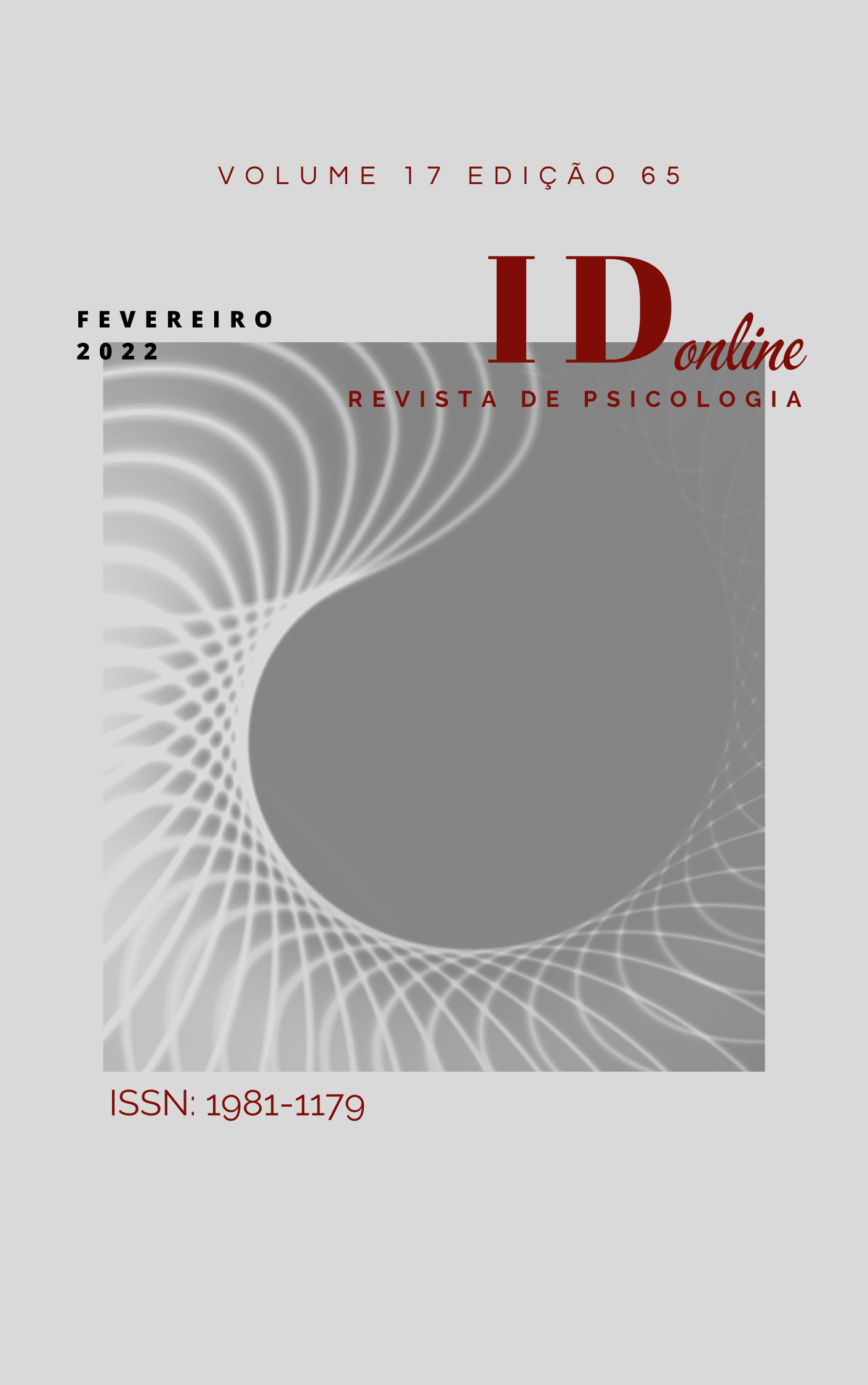Lung Aeration and Prone Positioning in Adults with Covid-19: Scoping Review
DOI:
https://doi.org/10.14295/idonline.v17i65.3687Keywords:
COVID-19 infection, Prone Position, Mechanical Ventilation, Artificial respiration, Lung AerationAbstract
This review aims to describe the repercussions of prone positioning on lung aeration of adults with COVID-19 under invasive mechanical ventilation. Two independent reviewers selected studies in databases LILACS, PubMED, MEDLINE e SciELO. We included studies assessing the repercussions of prone positioning in lung aeration and oxygenation – PaO2 and FiO2/ratio. In addition to identifying the implications of studies on days of invasive mechanical ventilation and mortality. 150 articles were identified and six made up the sample. A total of 70 patients were evaluated using lung ultrasound, electrical impedance tomography and chest computed tomography before, during and/or after prone position. Despite the heterogeneity of the sample and the protocols used, lung aeration increased in some lung regions after the prone positioning.
Downloads
References
BAMFORD, P. et al. ICS Guidance for Prone Positioning of the Conscious COVID Patient 2020. Intensive Care Society, 2020.
BHATIA, R. et al. Electrical impedance tomography can rapidly detect small pneumothoraces in surfactant-depleted piglets. Intensive Care Medicine, v. 38, n. 2, p. 308–315, 2012. DOI: https://doi.org/10.1007/s00134-011-2421-z
BRUCE, E. et al. Direct RT-qPCR Detection of SARS-COV-2 RNA from Patient Nasopharyngeal Swabs without an RNA Extraction Step. bioRxiv: the preprint server for biology, 2020. DOI: https://doi.org/10.1101/2020.03.20.001008
CALLIGARO, G. L. et al. The utility of high-flow nasal oxygen for severe COVID-19 pneumonia in a resource-constrained setting: A multi-centre prospective observational study. E Clinical Medicine, v. 1, n. 9, p. 100570, 2020. DOI: https://doi.org/10.1016/j.eclinm.2020.100570
CAVALCANTI, A. B. et al. Effect of lung recruitment and titrated Positive End-Expiratory Pressure (PEEP) vs low PEEP on mortality in patients with acute respiratory distress syndrome - A randomized clinical trial. JAMA, v. 318, n. 14, p. 1335–1345, 2017.
CHEN, N. et al. Epidemiological and clinical characteristics of 99 cases of 2019 novel coronavirus pneumonia in Wuhan, China: a descriptive study. The Lancet, v. 395, n. 10223, p. 507–513, 2020a. DOI: https://doi.org/10.1016/S0140-6736(20)30211-7
CHEN, Z. M. et al. Diagnosis and treatment recommendations for pediatric respiratory infection caused by the 2019 novel coronavirus. World Journal of Pediatrics Institute of Pediatrics of Zhejiang University, 2020b. DOI: https://doi.org/10.1007/s12519-020-00345-5
CLARKE, J. et al. Prone positioning improves oxygenation and lung recruitment in patients with SARS-CoV-2 acute respiratory distress syndrome; a single centre cohort study of 20 consecutive patients. BMC Research Notes, v. 14, n. 1, p. 1–6, 1 dez. 2021. DOI: https://doi.org/10.1186/s13104-020-05426-2
CONSTANTIN, J. M. et al. Personalised mechanical ventilation tailored to lung morphology versus low positive end-expiratory pressure for patients with acute respiratory distress syndrome in France (the LIVE study): a multicentre, single-blind, randomised controlled trial. The Lancet Respiratory Medicine, v. 7, n. 10, p. 870–880, 2019.
DALLA CORTE, F. et al. Dynamic bedside assessment of the physiologic effects of prone position in acute respiratory distress syndrome patients by electrical impedance tomography. Minerva Anestesiologica, v. 86, n. 10, p. 1057–1064, 2020. DOI: https://doi.org/10.23736/S0375-9393.20.14130-0
DAMARLA, M. et al. Prone positioning of nonintubated patients with COVID-19. American Journal of Respiratory and Critical Care MedicineAmerican Thoracic Society, 2020. DOI: https://doi.org/10.1164/rccm.202004-1331LE
EHRMANN, S. et al. Awake prone positioning for COVID-19 acute hypoxaemic respiratory failure: a randomised, controlled, multinational, open-label meta-trial. The Lancet Respiratory, v. 9, p. 1387–1395, 2021.
GHELICHKHANI, P.; ESMAEILI, M. Prone Position in Management of COVID-19 Patients; a Commentary. Archives of academic emergency medicine, v. 8, n. 1, p. e48, 2020.
GUÉRIN, C. et al. Prone Positioning in Severe Acute Respiratory Distress Syndrome. N Engl J Med, v. 23, n. 6, p. 2159–68, 2013. DOI: https://doi.org/10.1056/NEJMoa1214103
GUÉRIN, C. Prone ventilation in acute respiratory distress syndrome. European Respiratory Review, v. 23, n. 132, p. 249–257, 2014. DOI: https://doi.org/10.1183/09059180.00001114
HIGGINS, J. et al. Cochrane Handbook for Systematic Reviews of Interventions version 6.1 . Disponível em: . Acesso em: 17 dez. 2020.
HUANG, C. et al. Clinical features of patients infected with 2019 novel coronavirus in Wuhan, China. The Lancet, v. 395, n. 10223, p. 497–506, 2020. DOI: https://doi.org/10.1016/S0140-6736(20)30183-5
JOANNA BRIGGS INSTITUTE. The Joanna Briggs Institute Reviewers’ Manual 2015 Methodology for JBI Scoping Reviews. Disponível em: <https://nursing.lsuhsc.edu/JBI/docs/ReviewersManuals/Scoping-.pdf>. Acesso em: 30 out. 2020.
KOULOURAS, V. et al. Efficacy of prone position in acute respiratory distress syndrome patients: A pathophysiology-based review. World Journal of Critical Care Medicine, v. 5, n. 2, p. 121, 2016. DOI: https://doi.org/10.5492/wjccm.v5.i2.121
MAURI, T. et al. Potential for Lung Recruitment and Ventilation-Perfusion Mismatch in Patients with the Acute Respiratory Distress Syndrome from Coronavirus Disease 2019∗. Critical Care Medicine, v. 48, n. 8, p. 1129–1134, 2020. DOI: https://doi.org/10.1097/CCM.0000000000004386
PENG, Q. Y.; WANG, X. T.; ZHANG, L. N. Findings of lung ultrasonography of novel corona virus pneumonia during the 2019–2020 epidemic. Intensive Care Medicine, 2020. DOI: https://doi.org/10.1007/s00134-020-05996-6
PESCHEL, G. et al. Interstitial lung opacities in patients with severe COVID-19 pneumonia by bedside high-resolution ultrasound in association to CO 2 retention. Clinical Hemorheology and Microcirculation, v. 77, n. 4, p. 355–365, 1 jan. 2021. DOI: https://doi.org/10.3233/CH-200925
PIERRAKOS, C. et al. Case report: Lung ultrasound for the guidance of adjunctive therapies in two invasively ventilated patients with COVID-19. American Journal of Tropical Medicine and Hygiene, v. 103, n. 5, p. 1978–1982, 2020. DOI: https://doi.org/10.4269/ajtmh.20-0538
ROSSI, S. et al. Mechanisms of oxygenation responses to proning and recruitment in COVID-19 pneumonia. Intensive Care Medicine, 2021. DOI: https://doi.org/10.1007/s00134-021-06562-4
SCHENCK, E. J. et al. Respiratory mechanics and gas exchange in COVID-19–associated respiratory failure. Annals of the American Thoracic Society, 2020. DOI: https://doi.org/10.1513/AnnalsATS.202005-427RL
SPAETH, J. et al. Increasing positive end-expiratory pressure (re-)improves intraoperative respiratory mechanics and lung ventilation after prone positioning. British Journal of Anaesthesia, v. 116, n. 6, p. 838–846, 2016. DOI: https://doi.org/10.1093/bja/aew115
TELIAS, I.; KATIRA, B. H.; BROCHARD, L. Is the Prone Position Helpful during Spontaneous Breathing in Patients with COVID-19? JAMA, 2020. DOI: https://doi.org/10.1001/jama.2020.8539
TOMASINO, S. et al. Electrical Impedance Tomography and Prone Position During Ventilation in COVID-19 Pneumonia: Case Reports and a Brief Literature Review. Seminars in Cardiothoracic and Vascular Anesthesia, 2020. DOI: https://doi.org/10.1177/1089253220958912
TUNG-CHEN, Y. Lung ultrasound in the monitoring of COVID-19 infection. Clinical medicine (London, England), v. 20, n. 4, p. e62–e65, 2020. DOI: https://doi.org/10.7861/clinmed.2020-0123
WANG, D. et al. Clinical Characteristics of 138 Hospitalized Patients with 2019 Novel Coronavirus-Infected Pneumonia in Wuhan, China. JAMA, v. 323, n. 11, p. 1061–1069, 17 mar. 2020. DOI: https://doi.org/10.1001/jama.2020.1585
WINDISCH, W. et al. Position Paper for the State of the Art Application of Respiratory Support in Patients with COVID-19: German Respiratory Society. Pneumologie, v. 74, n. 6, p. 337–357, 2020.
WU, Z.; MCGOOGAN, J. M. Characteristics of and Important Lessons from the Coronavirus Disease 2019 (COVID-19) Outbreak in China: Summary of a Report of 72314 Cases from the Chinese Center for Disease Control and Prevention. JAMA, 2020. DOI: https://doi.org/10.1001/jama.2020.2648
YASUKAWA, K.; MINAMI, T. Point-of-care lung ultrasound findings in patients with COVID-19 Pneumonia. American Journal of Tropical Medicine and Hygiene, v. 102, n. 6, p. 1198–1202, 2020. DOI: https://doi.org/10.4269/ajtmh.20-0280
ZARANTONELLO, F. et al. Prone Position and Lung Ventilation and Perfusion Matching in Acute Respiratory Failure due to COVID-19 A B Supine Prone. Am J Respir Crit Care Med, v. 202, n. 2, p. 278–279, 2020. DOI: https://doi.org/10.1164/rccm.202003-0775IM
ZIEHR, D. R. et al. Respiratory Pathophysiology of Mechanically Ventilated Patients with COVID-19: A Cohort Study. American journal of respiratory and critical care medicine, v. 201, n. 12, p. 1560–1564, 2020. DOI: https://doi.org/10.1164/rccm.202004-1163LE
Downloads
Published
How to Cite
Issue
Section
License
Copyright (c) 2023 Wine Suélhi dos Santos, Camilla Isis Rodrigues dos Santos, Helga Cecília Muniz de Souza, Shirley Lima Campos, Daniella Cunha Brandão, Armèle Dornelas de Andrade

This work is licensed under a Creative Commons Attribution-NonCommercial 4.0 International License.
Os autores detêm os direitos autorais sem restrições, devendo informar a publicação inicial nesta revista, em caso de nova publicação de algum trabalho.










